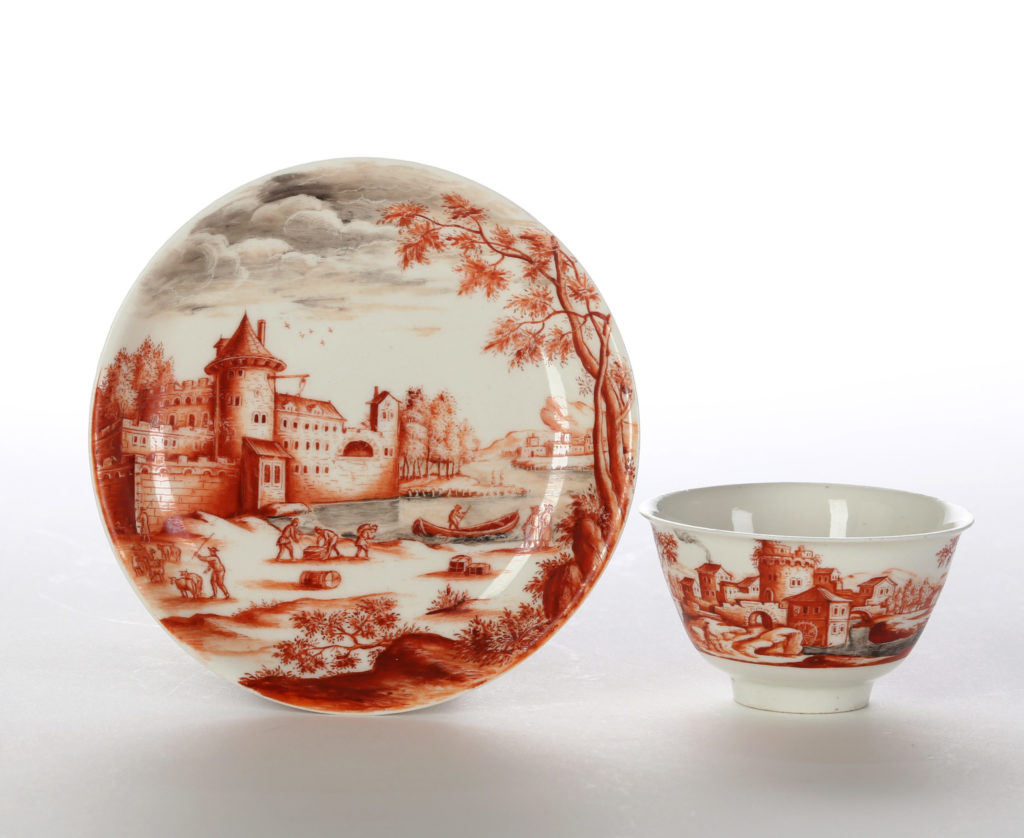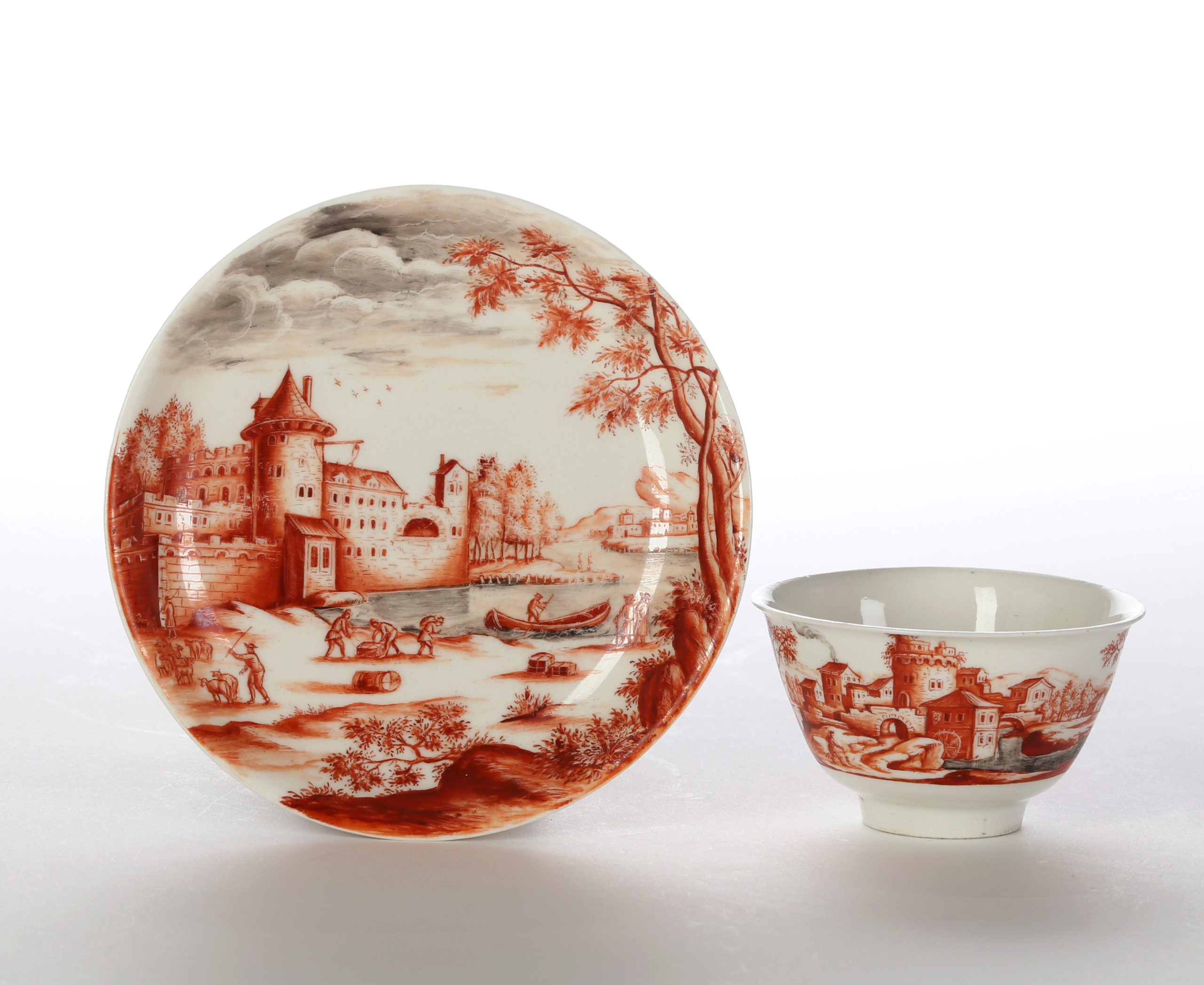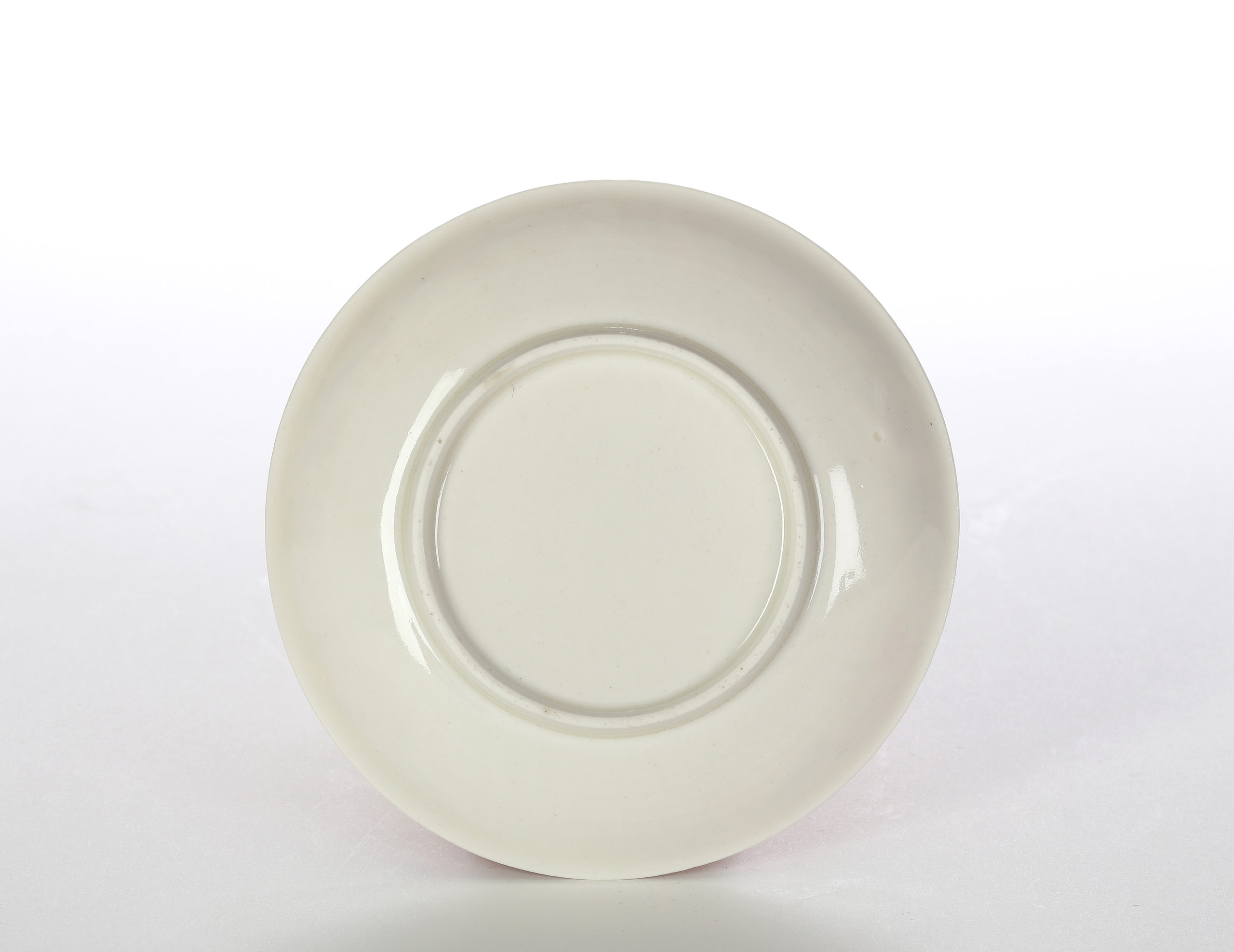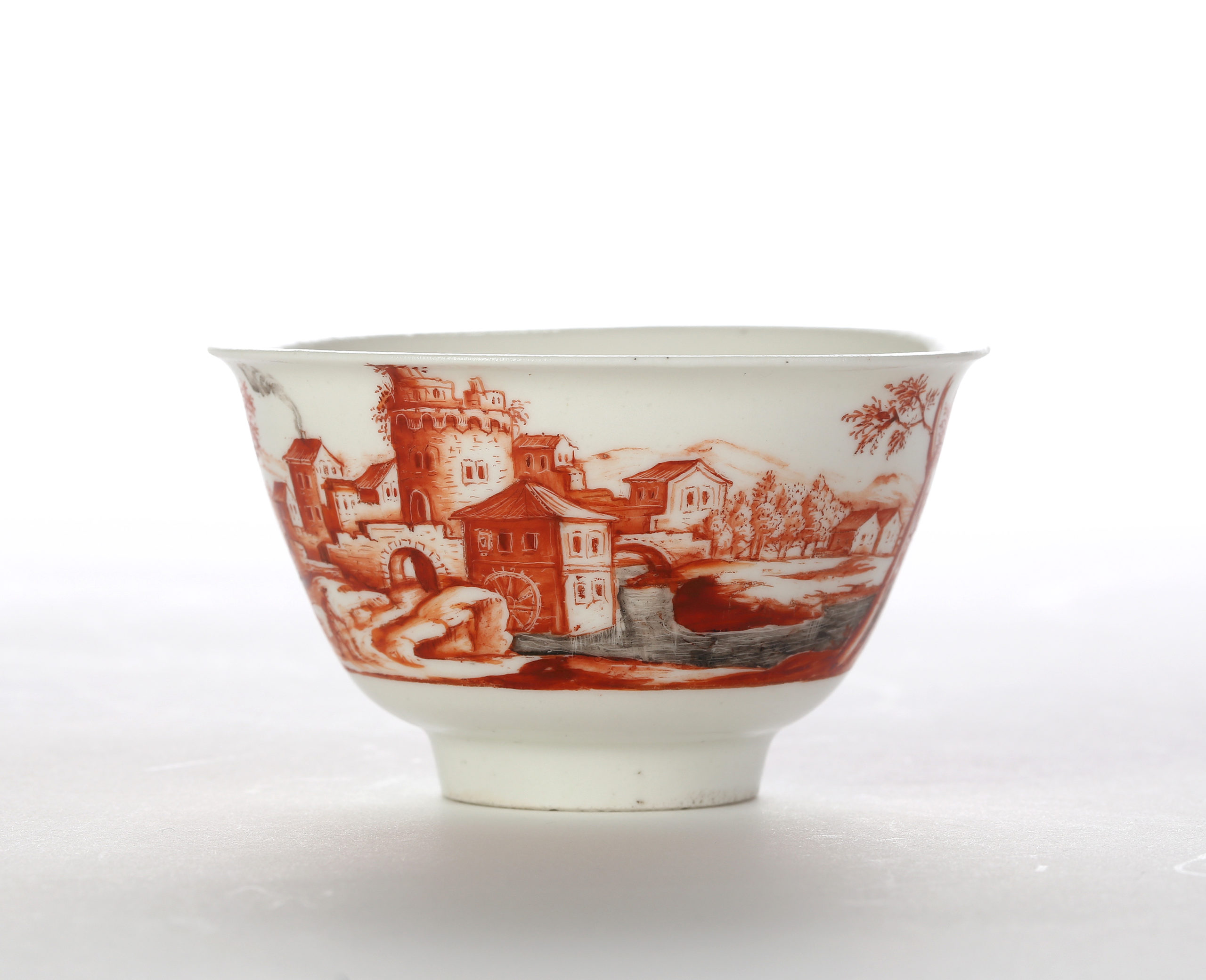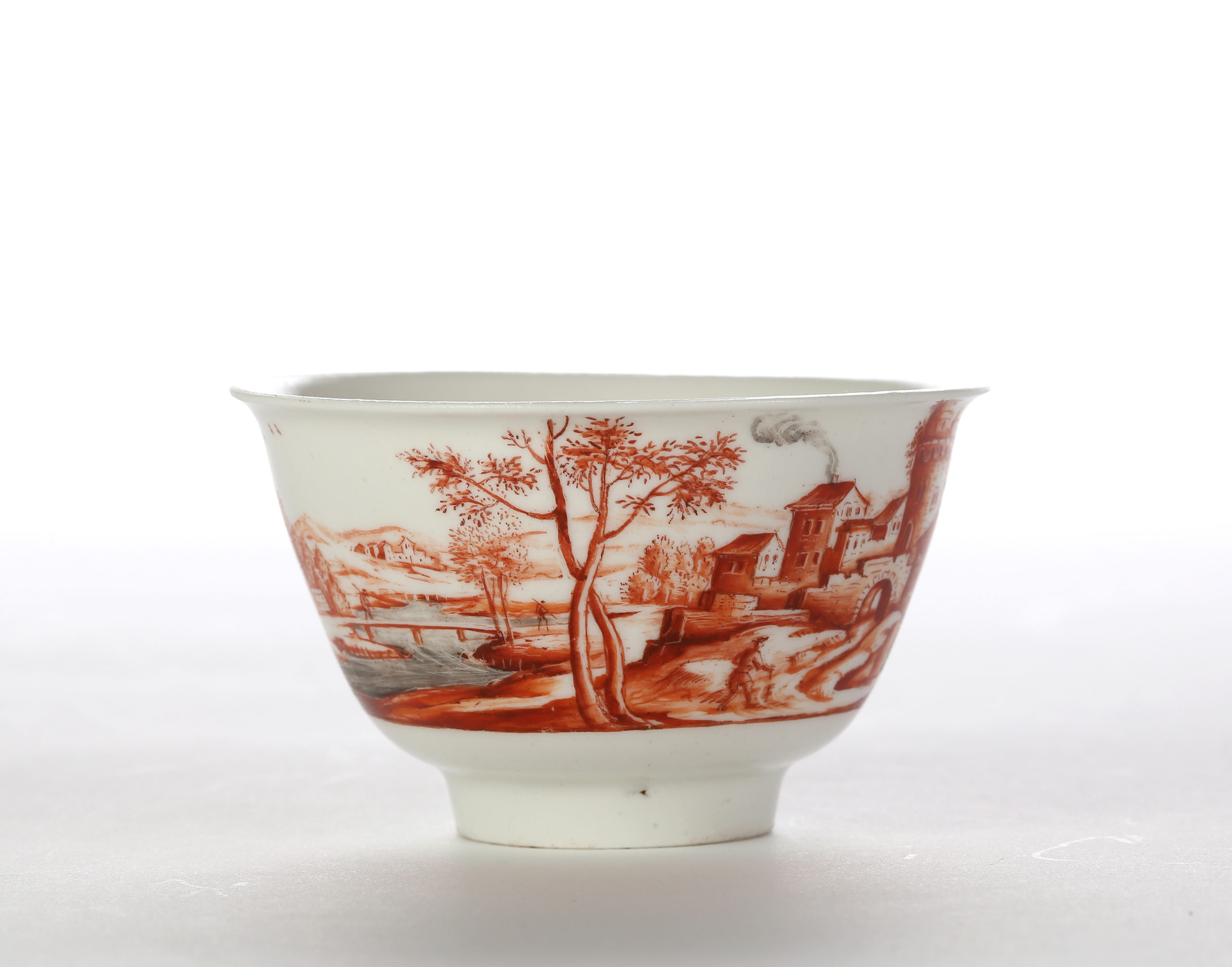Painted in iron-red and black, schwarzlot, with scenes of figures loading barrels onto boats before a fortified town and figures fishing by a water mill.
Ignaz Preissler was perhaps the most skilled of all the outside decorators or hausmaler. With his father Daniel, a noted decorator of glass, Ignaz Preissler worked in eastern Bohemia at Kunštát (Kronstadt), for Franz Karl, Count Liebsteinsky von Kolowrat. Records state that he mostly painted chinoiseries (Indijanische Figuren und landschaften) but also ‘difficult poetic subjects’ (Poetische Mühesame). In 1731 Ignaz Preissler stated in a letter that he, like his father, considered monochrome painting in black or iron-red to be the finest and most subtle form of decoration.
There are no signed pieces by Ignaz Preissler although work of this type is generally considered to be by him. There is also the possibility of such a piece being by his father Daniel (although that is perhaps unlikely at this date) or by his younger brother Florián Preissler who is possibly the “Herr Preußler” who spent some years working for Johann Christian Kundmann in Wroclaw. Another artist – Tobiáš Hanuš (1695-1733) is also recorded as a porcelain painter on the Kolowrat estates at Rychnov.
Recent studies in the National Archives in Prague have shown that considerable numbers of pieces of porcelain and glass decorated in black or red enamels and gold on glass and porcelain as well as reverse paintings on glass were originally preserved in the possession of the Kolowrat family in their castle of Rychnov nad Knĕžnou. This suggests an efficient workshop responding to the lord’s needs; its activities can be traced from the late 17th century and through the 1730s.
This style of decoration is close to that of the earlier Nuremberg hausmaler who worked on faience and glass such as Johann Schaper and Johann Faber and it is possible that Daniel Preissler learnt his art there as a young man.
The porcelain decorated by the Preisslers is often mistakenly said to be Viennese, Du Paquier. This is very rarely the case. The confusion arises because the forms are often untypical for Meissen but this is because the outside decorators had access to old stocks of Meissen porcelain, pieces that were imperfect or of shapes that were no longer current.
Other related pieces attributed to Ignaz Preissler and decorated in iron-red and schwarzlot are illustrated, Helena Brožková, 2009, nos. 77 and 82. Gustav E. Pazaurek, writing in 1925, tentatively attributed this style of decoration to the Nuremberg hausmaler Johann Ludwig (or F.L.) Faber who worked on glass and faience but he was born in 1660 and his known work dates mostly from the 1680s and 1690s, he is not known to have worked at the period when Böttger porcelain was available.
Condition:
Minor surface wear, no restoration
References:
Helena Brožková,(ed.), ‘Daniel a Ignác Preisslerové, Barokné malíři skla a porcelánu, Prague Museum exhibition catalogue, 2009
Jaroslav Šůla, Daniel and Ignaz Preissler, Bohemian Baroque Glass and Porcelain Painters and Their Families, English summary, pp. 32 &32
Helena Brožková, “Suae Excellentiae Pictores” Daniel et Ignatius Preissler, English summary, pp. 98 & 99
Gustav E. Pazaurek, Deutsche Fayence-und Porzellan Hausmaler,Leipzig, 1925, vol. I, p. 214-218
Errol Manners, ‘Dutch ‘Fine Line’ and German Schwarzlot Decoration’, Transactions of The Oriental Ceramic Society, vol. 65, 2000-2001
This item has been sold

